Hope chest – Raising the panels

I have seen a culture shift take place that has negated the rights of young people to find productive work, which has in turn undermined their confidence in education and political constructs and rightly so. Mismanaged lives through politics and education, one and the same, have left the next generation in despair in similar fashion that the 1960s did when movements reached a crescendo in marches protesting the unfairness of that age.
Raising the plain
I worked on my front panel of the Hope Chest today, in between a few interruptions with the telephone, radio station interviews and emails about the North of England Woodworking Show this coming weekend. You might be surprised by my findings today. Instead of using a panel-raising plane, a highly specialised and very expensive plane if you can get hold of one, I used a series of ordinary bench planes. Firstly I planed the surfaces flat, which took only a few minutes. I dealt with wiry grain with a #80 scraper, but mostly the #5 ½ bench plane. I soon had the panel dead flat, which it must be before the bevel is formed because otherwise the bevels will not come out straight.
With the board flat I used a marking gauge to mark the limit of the bevel at 3/8” and ran the gauge line around the edge of the board. I then set the distance for the bevel on the face of the board and I was ready for removing shavings down to these lines.
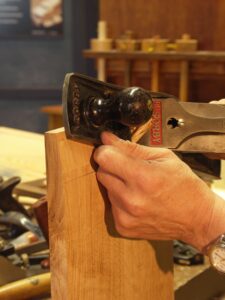
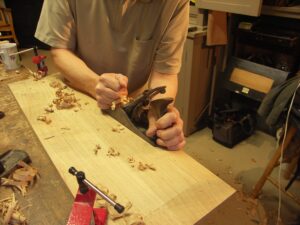
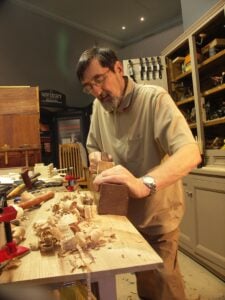
So here now are my findings:
For the cross-grain bevel my I Sorby worked best and I am certain a Stanley or Record #5 1/2 would work equally well. I felt I had good control of the tool and the work. It did work quite well along the grain at the awkward angle, but not as well as across the grain. The bevel-up Veritas planes worked well across the grain too, but I found that the throat clogged a little more easily. Now on the long grain, because the oak is not particularly straight grained, the grain tore intermittently and tear-out was quite dramatic, which is typical of all bevel-up planes when they meet converse grain, but I have more on this shortly.
Now I am very used to wooden-bodied planes, so reaching for my larger jointer I felt a certainty it was more than equal to the task, even in oak, and that proved to be the case. In two minutes the 30″ long bevel was fully and evenly formed, dealing admirably with any converse or reverse grain with little more than a hiccup and with very shallow and minor levels of tear-out, which proved yet again my theory that bevel-down planes are more valid for general planing than bevel-up planes.
Now let me look at something on the bevel-up planes:
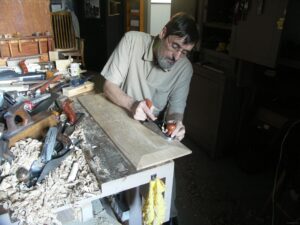
Having raised my panels with the wooden bodied and the metal cast planes I set the bevel up planes to a superfine surface cut with a narrowly set mouth. I then refined the cuts to perfection and that is when these planes really came into their own.
Here I am fitting the raised panel into the front frame
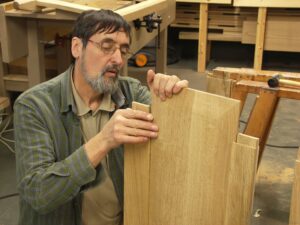
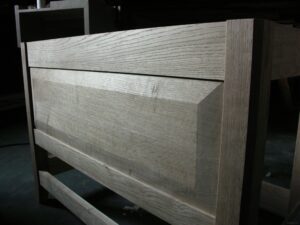
Enjoyed a wonderful day progressing the Real Woodworking Campaign.

